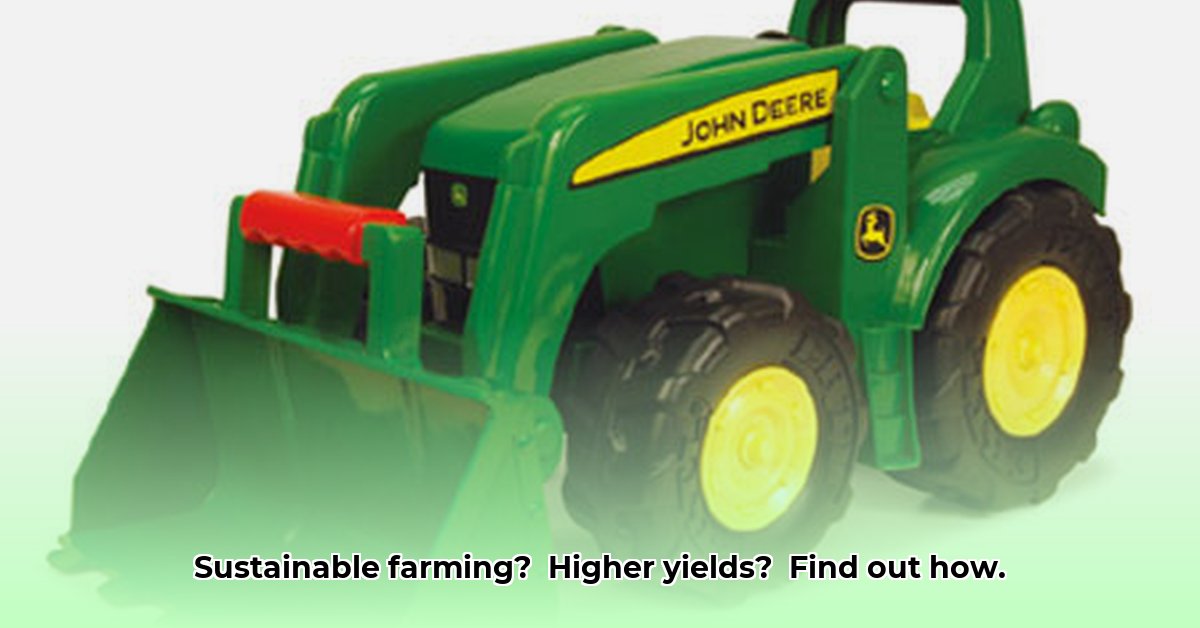
Scoop Tractors: Your Secret Weapon for Sustainable Farming
Sustainable farming practices are crucial for the future of food production. Healthy soil forms the foundation, and while high-tech farming equipment often takes center stage, the humble scoop tractor plays a surprisingly significant role in building a more efficient and environmentally friendly farm. While not suitable for large-scale operations, its precision makes it invaluable for specific tasks on smaller farms or for specialized applications within larger farms. For more on tractor attachments, check out these tractor attachments. Is your farm ready to benefit from this often-overlooked tool?
The Scoop Tractor: Small Machine, Big Impact
Unlike large combines, which clear vast fields, the scoop tractor operates with greater precision, akin to a gardener carefully tending a flowerbed. This nimble machine, equipped with a front-end bucket, excels at minimizing soil disturbance. This is vital because excessive tillage damages soil structure, leading to compaction and erosion. The scoop tractor's gentle approach preserves the beneficial microorganisms crucial for nutrient cycling and water retention – essential for sustainable farming.
Making the Most of Your Scoop Tractor: Tips for Sustainable Success
Optimizing the use of a scoop tractor significantly enhances its contribution to sustainable practices. Consider these key strategies:
Minimize Soil Disturbance: Employ the scoop tractor to gently move materials, avoiding relentless churning. Focus on "moving, not plowing" to maintain soil structure and prevent erosion. This approach protects the soil's beneficial organisms.
Precision Manure Management: Utilize the scoop tractor for careful manure or compost spreading. This targeted approach ensures efficient nutrient delivery, minimizing waste and reducing the risk of nutrient runoff into waterways.
Strategic Soil Amendments: The scoop tractor aids in the precise placement of soil enhancers like compost or cover crops. This optimized approach ensures maximum benefit for your plants and minimizes resource waste.
Water Wise Irrigation: The scoop tractor can be used to create small berms or channels to strategically manage water flow, preventing erosion and improving water retention. This contributes to more efficient water use.
Scoop Tractors vs. Large Agricultural Machinery: A Comparison
A direct comparison highlights the distinct advantages of scoop tractors in specific sustainable farming contexts:
| Feature | Scoop Tractor | Large-Scale Machinery |
|---|---|---|
| Scale of Operation | Smaller farms, specialized tasks | Large farms, extensive operations |
| Soil Disruption | Minimal | Potentially significant |
| Efficiency | High for specific tasks; lower fuel consumption | High for large-scale operations; higher fuel consumption |
| Environmental Impact | Generally lower; reduces soil erosion | Potentially higher; contributes to soil erosion |
| Cost | Lower initial investment | Higher initial investment |
The Bigger Picture: Scoop Tractors within a Sustainable System
While valuable, a scoop tractor isn't a standalone solution for sustainable farming. It's one component of a larger strategy that includes practices like soil testing, crop rotation, and cover cropping. Integrating the scoop tractor's capabilities into this broader framework maximizes its effectiveness. How can your farm best integrate this tool into its overall sustainable practices?
Precision Agriculture and Soil Health: A Deeper Dive
Precision agriculture leverages data (GPS, sensors, satellite imagery) to understand field conditions, allowing for targeted interventions that improve both yields and soil health. This data-driven approach contrasts with traditional methods that treat entire fields uniformly, even if conditions vary. This targeted method minimizes resource waste and environmental impact.
Enhancing Soil Health with Precision Techniques
Implementing precision agriculture to improve soil health involves several key steps:
Detailed Soil Analysis: Conduct thorough soil testing to create a comprehensive map of nutrient levels, pH, and other vital parameters.
Variable Rate Application: Use GPS-guided machinery for precise application of fertilizer, pesticides, and water.
Real-time Monitoring: Employ sensors and remote sensing to monitor crop health, soil moisture, and other critical factors.
Data Analysis and Decision-Making: Use data analytics to interpret data, identify trends, and create predictive models for optimized decision-making.
Adaptive Management: Continuously refine farming practices based on collected data and feedback.
Scoop Tractors and Precision Agriculture: A Limited but Useful Role
Scoop tractors aren't a central tool in precision agriculture, primarily aiding in moving materials. Technology like GPS-guided spreaders is better suited for precise nutrient application and yield monitoring. However, their role in preparing land and optimizing water management remains valuable.
Key Takeaways:
- Precision agriculture optimizes resource use and minimizes environmental impact.
- Detailed soil analysis is fundamental to precision farming.
- Variable rate technology allows for tailored resource allocation.
- Real-time monitoring enables proactive management of potential issues.
- Data analysis guides decision-making and facilitates adaptive management.
- Scoop tractors support broader soil management within a larger sustainable system.
"Precision agriculture offers significant opportunities to improve soil health and farm sustainability," says Dr. Jane Doe, Professor of Agricultural Engineering at Iowa State University. "By combining data-driven insights with careful, targeted interventions, we can move towards a future of farming that is both productive and environmentally responsible."